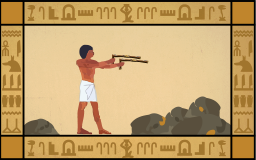The Wiki for Tale 8 is in read-only mode and is available for archival and reference purposes only. Please visit the current Tale 11 Wiki in the meantime.
If you have any issues with this Wiki, please post in #wiki-editing on Discord or contact Brad in-game.
Guide/Dowsing
| English | français |
General
First, you need to assemble a Dowsing Rod.
- It is used to locate veins of metal Ore.
- When carrying one, a Dowsing Icon will allow the checking of the coordinate you are on.
- Dowsing starts a Focus timer.
Tips n Tricks
- Sometimes the absence of an ore is as important as its presence. If you find a gap in a vein of ore, it's quite probable that you have an intersection of rare ore!
- Focus helps you dowse more often
- Constitution helps you detect a larger area
Perception detects the ore type and is the primary stat required. Each ore type requires a different perception level similar to stone quarries.
Each ore type has a different path trajectory (direction like curved, straight) and width (number of coordinates).
If the width of the ore path is narrow (eg 1 coord wide) then you have to be standing directly on top of it to detect it. Adding +CON allows you to detect a vein when you are near but not on top of it.
- With base of 0 CON you get a message similar to: You detect nothing under your feet.
- With ++CON you get a message similar to: You detect a vein of ore nearby.
In different tales, the distance between mines can be a significant difference between having multiple mines share the same ore field. Consider the placement of the mine carefully. Buildings and stone quarries and vineyards can be impact the placement of a mine.
- An indirect consideration is the distance to smelters and furnaces. Many guilds and players setup Public Mines and Smelters and upgrade them as advanced technologies are opened. Especially in Early Telling, these facilities are expensive to make and it is a great benefit to all players.
COPIED FROM T7, PLEASE UPDATE AS DISCOVERED
Perception Required
THIS INFO BELOW IS NOT CORRECT IN TELLING 8, Take it whit a grain of salt. a dash (-) next to a number means that number or possibly lower, and needs to be updated as discovered
| Metal/Ore Type | Unrecognized At | Recognized At | Vein Shape | Other Metals Nearby |
| Copper | N/A | 0 | Line approx 10 co-ords wide | Tin, Zinc, Lead, Iron |
| Iron | 1 | 2 | Line | |
| Tin | 2 | 4 | Blob | on end of copper, found solo, found ironxcopper |
| Aluminum | 2 | 5 | Line 2 to 5 co-ords wide with blobs | On the end of iron, solo |
| Zinc | 3 | 6 | Ring | Lead |
| Lead | 3 | 7 | Spot and Blob | Zinc |
| Tungsten | 4 | (8) | ||
| Titanium | 5 | (10) | ||
| Lithium | (7-) | (13-) | Square-ish, 50*55 coords | |
| Antimony | (7) | (13-) | ||
| Strontium | (7-) | (14) | ||
| Silver | (7) | (15) | Line 2-3 co-ords wide. | plat at end |
| Magnesium | (8-) | (16-) | ||
| Platinum | (13-) | (24) | Blob | cap on silver end |
| Gold | (13-) | (24) | Blob | cap on Aluminum end |
Ore Shapes
- Copper - Curved not always capped with another ore, but frequently is.
- Iron - Straight diagonal line, 2 coords wide.
- Lead - Blob with a ring of Zinc surrounding it
- Platinum - Intersection of Aluminium and Iron, forms a small 10 co-ord wide blob (found one blob that's 20'ish across -Tut)
- Strontium - 4 Point Diamond 50-55 co-ordinates NSEW
- Not all points are always present
- I now think its an offset grid, not a diamond
- Zinc - Ring around a central lead blob (T8- 1 sample @65 coord radius from lead)
